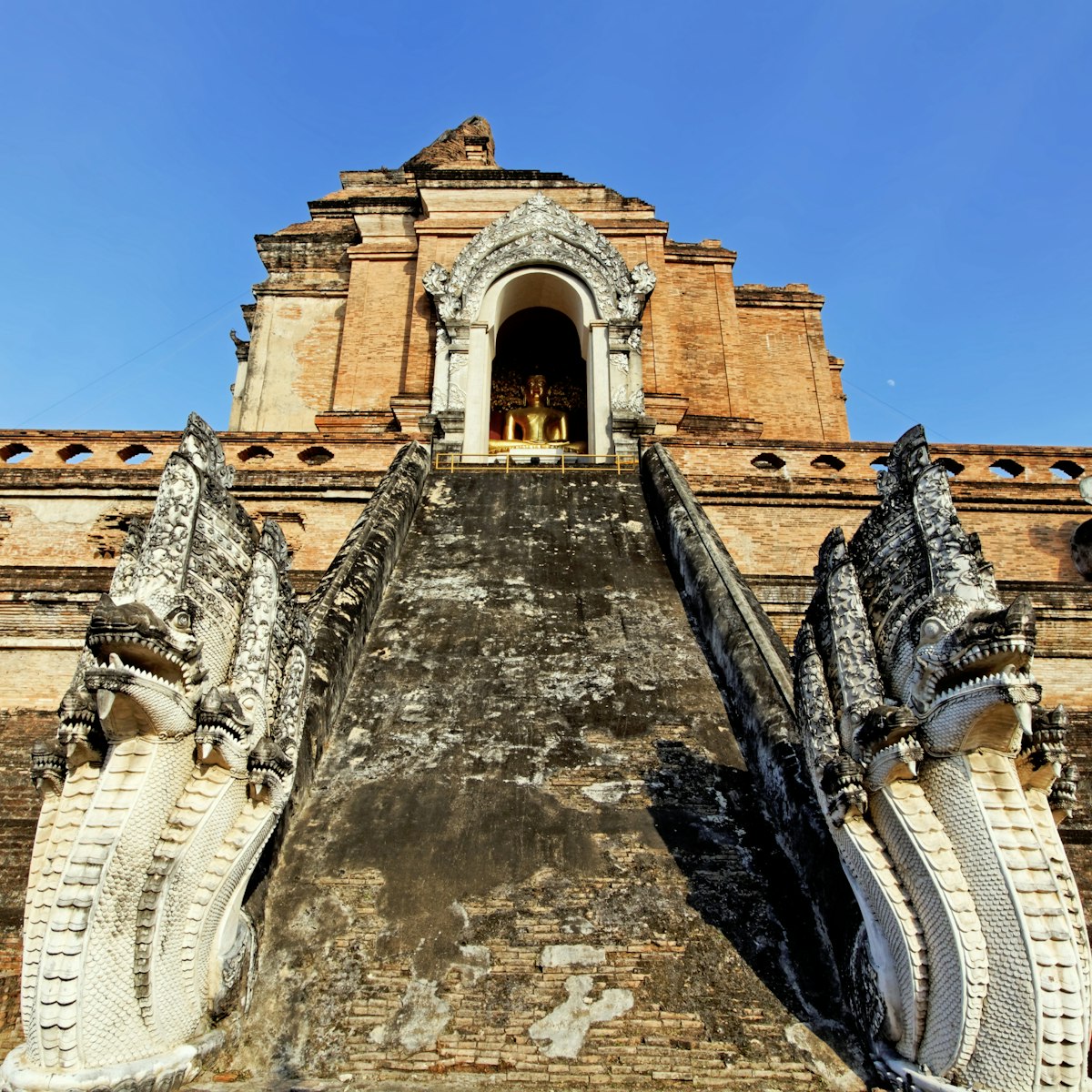Overlooking the city from its mountain throne, Wat Phra That Doi Suthep is one of northern Thailand's most sacred temples, and its founding legend is learned by every schoolkid in Chiang Mai. The wát is a beautiful example of northern Thai architecture, reached via a 306-step staircase flanked by naga (mythical sea serpents). The climb is intended to help devotees accrue Buddhist merit.
The monastery was established in 1383 by King Keu Naone to enshrine a piece of bone said to be from the shoulder of the historical Buddha. The bone shard was brought to Lanna by a wandering monk from Sukhothai and it broke into two pieces at the base of the mountain, with one piece being enshrined at Wat Suan Dok. The second fragment was mounted onto a sacred white elephant that wandered the jungle until it died, in the process selecting the spot where the monastery was later founded.
The terrace at the top of the steps is dotted with breadfruit trees, small shrines, rock gardens and monuments, including a statue of the white elephant that carried the Buddha relic to its current resting place. Before entering the inner courtyard, children pay their respects to a lizard-like guardian dragon statue known as 'Mom'.
Steps lead up to the inner terrace, where a walkway circumnavigates the gleaming golden chedi enshrining the relic. The crowning five-tiered umbrella marks the city's independence from Burma and its union with Thailand. Pilgrims queue to leave lotus blossoms and other offerings at the shrines surrounding the chedi, which are studded with Buddha statues in an amazing variety of poses and materials.
Within the monastery compound, the Doi Suthep Vipassana Meditation Center conducts a variety of religious outreach programs for visitors.
Rót daang (literally 'red trucks') run to the bottom of the steps to the temple from several points in Chiang Mai, including from in front of the zoo (per person 40B) and in front of Wat Phra Singh (per person 50B), but they only leave when they have enough passengers and prices may very depending on the driver's mood. Travellers can also work out a private ride with a rót daang, taxi or using the Grab Car mobile application. Many people cycle up on mountain-biking tours from Chiang Mai, and you can also walk from the university.







